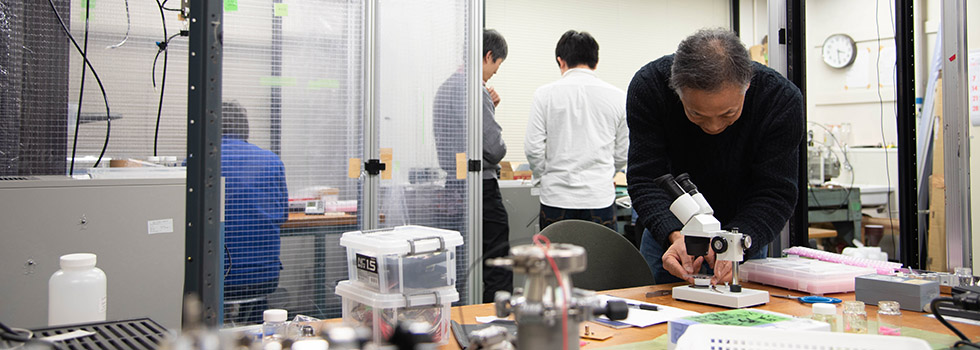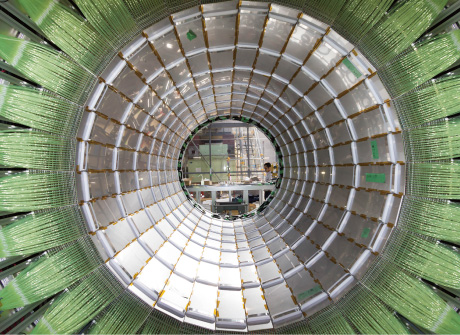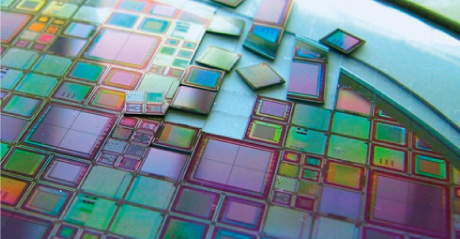
Development of new instrument with new detector technology
Recent particle physics, space observation, and mass spectroscopy experiments have special demands on detectors, such as high radiation resistance, high position resolution, high detection efficiency, light weight, and low power consumption. Also, new detectors are becoming available with the advancement of semiconductor technologies. Our goal is to develop new types of detector instruments with the new emerging detector technologies. The developed instrument technologies can be applied to other fields, such as imaging in chemistry and biology, in addition to the original fields.
FEATURE
We will develop detectors required under special conditions, and share the developed detector technologies with other fields to open possibilities for new experiments and measurements.
RESULTS
Research progress
Measurement of particle energies and incident positions
Electromagnetic calorimeters are usually used to measure particle energies and incident positions. We have developed a novice three-dimensional electromagnetic calorimeter that can measure the depth of showers in addition to two-dimensional hit position, to identify incident particles. On each 50-cm-long CsI crystal, it has a semiconductor photodetector attached on its upstream side and a photomultiplier on its downstream side. The difference of light-propagation times between the two photodetectors gives the depths of the showers, and the measured depth can be used to distinguish photons and neutrons.
We also developed a readout controller for a semiconductor pixel detector. We have a 2-cm-square pixel detector with an ASIC attached on its back side to detect hits in its 250 µm x 50 µm pixels. To control and read data from the ASIC, we developed a new system by utilizing a general-purpose FPGA board. With this new scheme, we can test pixel detectors without the usual need for the development of a specialized board.

Further development
Gamma-ray and neutron particle identification
The three-dimensional electromagnetic calorimeter can be used to distinguish gamma rays and neutrons. We are developing a 5 Gbps high-speed readout system required to read a higher-resolution detector with 50 μm square pixels.
